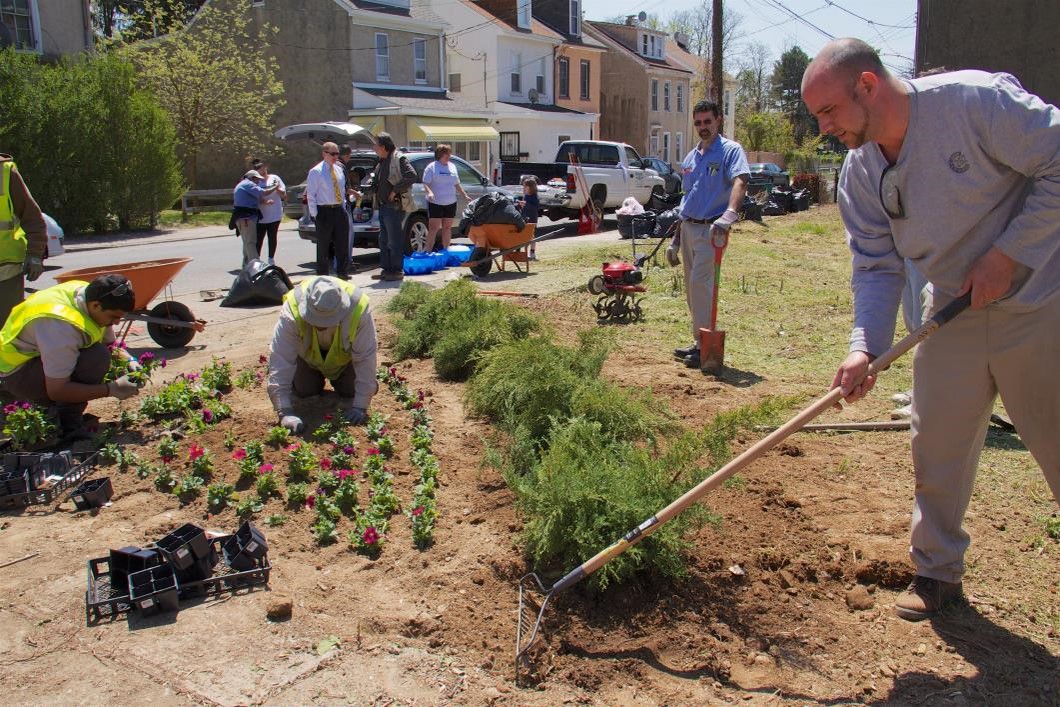There’s an old Sesame Street song that starts by asking the simple question, “Who are the people in your neighborhood?”
It then goes through various examples: the teacher, the bus driver, the baker, the doctor, the firefighter, the postman, the grocer. These are the people in your neighborhood, “the people that you meet when you’re walkin’ down the street…each day.” The song has a message: the residents are the neighborhood.
Big Bird and his friends seem to know something about community health. And they were ahead of their time. Professionals today are increasingly adopting an approach known as Asset-Based Community Development(ABCD). ABCD recognizes that people — residents themselves — are the key to thriving neighborhoods. Instead of seeing problems, ABCD sees neighborhood residents as problem solvers. Instead of treating them like clients, they are valued as changemakers. Rather than being recipients, they are contributors. They’re more than volunteers; they are leaders. In many communities, residents are becoming the drivers of change, taking the reins, and using a grassroots approach to create cities and towns that are healthier, safer, more active, and more vital.
A new mechanism that exemplifies the paradigm shift of ABCD is a participatory budgeting process in which residents decide how to spend part of a public budget, through public deliberation and voting. By becoming decision-makers for their city budgets, residents hold power to drive change in their neighborhood — because who better knows the needs of a community than the people who live there? Participatory budgeting is being used in cities across the globe; it’s led to community improvements like the installation of traffic lights at a pedestrian crosswalk in Paris and drinking fountains in New York City schools.
Last fall, the city of Niagara Falls in western New York conducted its first participatory budgeting process, with a focus on how best to allocate federal funding to improve the local park system. Residents voted to prioritize improvements to two very different types of parks: Hyde Park and Liberty Park. I toured both of them this month with local residents as my guides.
Hyde Park is the second-largest municipal park in New York State (after Central Park in New York City). It has splendor in addition to size; it includes a rose garden, an Olympic-size swimming pool, a professional baseball stadium, an ice rink, and multiple golf courses, as well as playgrounds, open space, and picnic areas. It’s centrally located. But not all of the spaces within the park are accessible to people with limited mobility or with disabilities, and residents voiced concern over those limitations. The improvements resulting from the participatory budgeting process will focus on revamping a playground area to create a protected space for children of all abilities to play safely.
Liberty Park is a totally different story. It’s a small neighborhood park, in a corner lot in a residential area. It has a swingset, a couple of benches, a few of those little rocking airplanes on spring coils, and a slide structure. The space and the equipment are poorly maintained; it feels neglected and abandoned. There is no lighting. It was empty on that sunny summer afternoon. Some teenagers from the Niagara Falls Youth City Council, an energetic group of teens committed to creating positive change, told me they used to play here all the time, but the space has become “gross” and feels unsafe; their younger siblings don’t want to play there.
But the residents, including those young people, see Liberty Park’s promise rather than its decline; they know that it was and can again be a community asset. Residents voted to invest in a total overhaul of the space through the participatory budgeting process. The renovated park will feature a physical fitness course to serve as an athletic playground for residents of all ages, and children’s programming will be a top priority. The project (as well as the Hyde Park project) includes an engagement and outreach effort using new park ambassadors to let their neighbors know about what the new park has to offer and encouraging them to use the renovated space.
In layman’s terms, ABCD is about seeing the glass as either half-full or half-empty. You can see both in Niagara Falls. The city is struggling; storefront after storefront on Main Street is shuttered and in disrepair. The loss of jobs, population decline, and poverty have taken a toll. Residents outside of the tourist section have seen limited investment in their neighborhoods, right in the shadows of the natural wonder of the Falls. There is a depressing reality.
But if that is all you see, open your eyes wider. The residents of Niagara Falls love their community and are resilient. They are creating new opportunities for families to play, exercise, and socialize safely in beautiful spaces. They are transforming vacant and overgrown lots into community gardens that help educate kids about growing, cooking, and eating healthy foods. In other communities, this type of work might be led by government agencies or established community nonprofits with full-time staff and budgets. In Niagara Falls, the efforts are predominately resident-led: people who spend their days working other jobs then spend their free time working to improve their community. The people are the neighborhood. With help, they can transform their community and define its future.
By David Sandman, President and CEO, New York Health Foundation
Published in Medium on June 25, 2018


